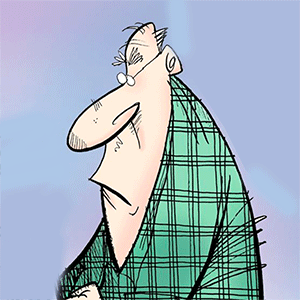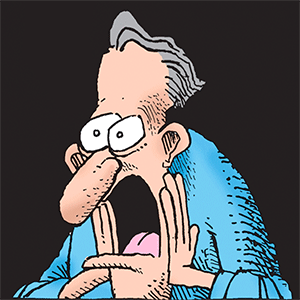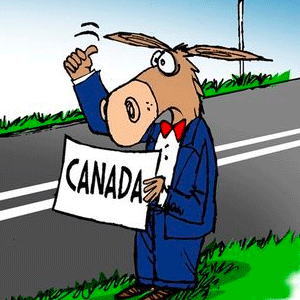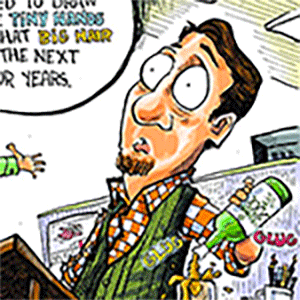From the Right
/Politics
Trump Faces 34 Felonies at Trial. But Was There a Crime?
WASHINGTON -- I can't tell you how many people I know who do not like former President Donald Trump yet nonetheless smell prosecutorial overreach in Manhattan.
District Attorney Alvin Bragg has charged the former president with 34 felony counts of falsifying business records. Trump has pleaded not guilty.
The case began with Michael Cohen, ...Read more
Iran Directly Attacks Israel Under Biden, Not Trump
WASHINGTON -- U.S. National Security Council spokesman John Kirby took the White House briefing room podium Monday with a mission: to dispel reports that Iran "meant to fail" when it launched missiles and drones to attack Israel over the weekend.
Kirby also scoffed at reports that Tehran secretly tipped off the administration in order to ...Read more
The World Is Changing. House Votes Against Intelligence Community
WASHINGTON -- Nineteen Republicans joined House Democrats on Wednesday to defeat a measure to extend Section 702 of the Foreign Intelligence Surveillance Act, the law that enables the federal government to spy on foreigners abroad. The procedural rule was blocked by a vote of 193-228.
The world is changing.
It's a sad moment for the country ...Read more
Biden's Loan Amnesty Passes the Buck
WASHINGTON -- "From day one, my administration has been committed to fixing the broken student loan system," President Joe Biden said to begin a video about his latest attempt to buy the college-graduate vote.
Whenever Biden calls something "broken," reach for your wallet.
According to the White House, Biden's student-loan forgiveness ...Read more
Border Is Big Issue for 2024
WASHINGTON -- Former President Donald Trump has a new cause, "migrant crime," and a new slogan, "Stop Biden's Border Bloodbath," as he noted during a speech in Grand Rapids, Michigan.
It doesn't take a pollster to see why. Just turn on cable news and watch the frequent skirmishes at the southwest border. You quickly realize that U.S. ...Read more
Who Put Marjorie Taylor Greene In Charge?
WASHINGTON -- When Rep. Marjorie Taylor Greene, R-Ga., announced on the Capitol steps Friday that she would file a motion to oust House Speaker Mike Johnson, a throng of Hill reporters leaned in.
MTG, as she is known, essentially is crack for cable news biggies. She validates the sneering class's poor opinion of conservatives. So of course ...Read more
Some Call It Influence Peddling, Others Call It the 'Biden Lift'
WASHINGTON -- "This is the best guy they can get?" Rep. Stephen Lynch, D-Mass., asked rhetorically at a House Oversight Committee hearing Wednesday to look into President Joe Biden's role in his family's alleged influence peddling.
The "guy" was Jason Galanis, a witness, invited by Republicans, who testified remotely from a Alabama prison ...Read more
USA IOU. Brother, Can You Spare a Trillion?
WASHINGTON -- Fiscal restraint is dead. The federal government spends $1.5 trillion more than it takes in. The national debt is $34.5 trillion.
That's more than $100,000 in debt for every man, woman and child in America.
No worries. On Monday, President Joe Biden released a $7.3 trillion budget for fiscal year 2025 that would increase taxes,...Read more
The Documents and the 'Elderly Man With a Poor Memory'
WASHINGTON -- "Why did he do it?" House Judiciary Chairman Jim Jordan asked about President Joe Biden's decision to hang onto classified documents in his garage, Delaware Penn Biden Center office and home office -- rather than in a secure facility.
In the hot seat Tuesday was Robert Hur, until recently the special counsel whose investigation ...Read more
Supreme Court Rules in Favor of Letting Voters Vote
WASHINGTON -- The Colorado Supreme Court decided in December that former President Donald Trump did not qualify for the 2024 ballot because he incited the Jan. 6, 2021, "insurrection" in violation of Section 3 of the 14th Amendment. It was an act of judicial overreach. In the 4-3 ruling -- all seven justices were appointed by Democrats -- the ...Read more
Showdown at the Border
WASHINGTON -- Thursday always was going to end this way. Former President Donald Trump would show up at the Texas border, and he would be on fire, while President Joe Biden would try and fail to play catch up, having lost the support of voters who think he's botched immigration bigly.
After all, Trump made plans to visit Eagle Pass last week,...Read more
From Trusted Informant in 2010 to Accused Liar in 2024
WASHINGTON -- In case any of the characters drawn to Hunter Biden -- back in the years when now-President Joe Biden's son was trolling for dollars by dangling access to his father -- missed the warning federal law enforcement delivered this month, the DOJ sent it twice.
On Feb. 14, the FBI arrested Alexander Smirnov at Harry Reid ...Read more
Special Counsel Indicts Hunter Biden -- and Informant
WASHINGTON -- The first question isn't why special counsel David C. Weiss charged longtime informant Alexander Smirnov with making false claims about President Joe Biden and his son Hunter. The question is, why now?
In 2024, an election year.
On Thursday, Weiss unsealed a 37-page indictment that charged Smirnov with making "a materially ...Read more
There Is Chaos at the Border and Finger-Pointing in Congress
WASHINGTON -- How bad is the situation at the Southwest border?
I attended a hearing Thursday of the House Subcommittee on National Security, the Border and Foreign Affairs on the consequences of the current "catch and release" policies to observe how members of both parties address an issue that troubles American voters.
The situation at ...Read more
Putin Wants It All. NATO Stands in His Way
WASHINGTON -- During an interview with Tucker Carlson, Russian President Vladimir Putin said that he has no interest in expanding the war in Ukraine to Poland and Latvia.
So with former Polish President Lech Walesa speaking at a Friday event put on by the Victims of Communism Museum, I had a chance to get the Polish game-changer's view of ...Read more
President Biden's Recall Is So Weak He Forgot About It
WASHINGTON -- President Joe Biden's memory is even worse than it looks.
That's the bad news found in Special Counsel Robert Hur's report on his criminal investigation of Biden's habitual mishandling of classified information.
Hur concluded that Biden "willfully retained and disclosed classified materials after his vice presidency when he was...Read more
After Border Security Fails in Senate, Biden Faults Trump
WASHINGTON -- There's been a serious outbreak of finger-pointing at the Biden White House this week.
During remarks delivered in the White House State Dining Room Tuesday, President Joe Biden recognized that a Senate border bill was likely to fail.
And it did tank the next day.
Biden blamed former President Donald Trump for pressing Senate ...Read more
Could RFK's Border Spotlight Spare America From 2020 Retreads?
WASHINGTON -- There's a video that shows Robert F. Kennedy Jr., presidential candidate, walking in what looks like the California hills with his dog. The Democrat-turned-independent sees a rattlesnake on the ground, picks it up and holds the reptile in a straight line, his fingers strategically placed to avoid any venom.
The message Kennedy ...Read more
GOP Impeachment Stunts and Bad Biden Border Policy
WASHINGTON -- The problem with the Homeland Security Committee's vote to impeach Homeland Security Secretary Alejandro Mayorkas is simple: It was a stunt. It they impeach, it'll be a bigger stunt.
The Democratic Senate won't convict President Joe Biden's point man on the border. So the exercise is a waste of energy and resources, a piece of ...Read more
Senate GOP Sees Antisemitism, Senate Dems See Diversity
WASHINGTON -- "Biden nominates union lawyer, Muslim American to U.S. appeals courts," read the Reuters headline in November when President Joe Biden tapped Nicole Berner and Adeel Mangi for federal judgeships.
I lead with the headline because I don't want to be accused of treating either would-be judge as a token. It's Democrats who did that....Read more






